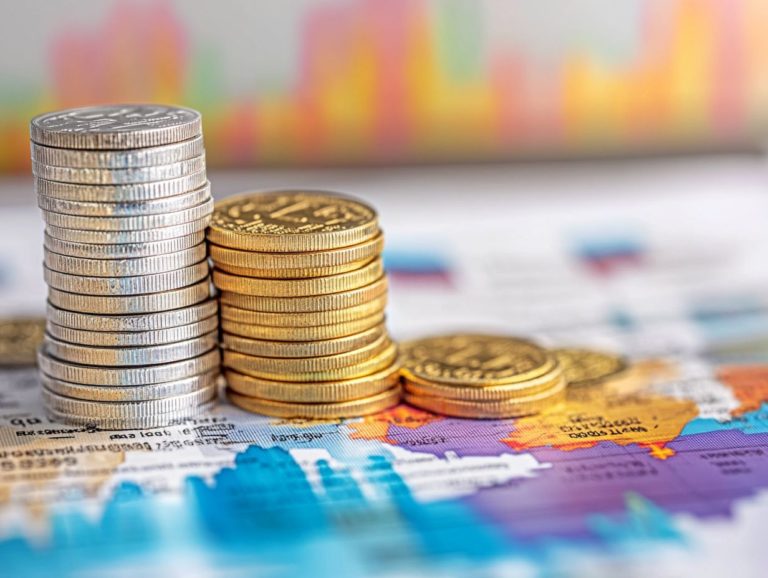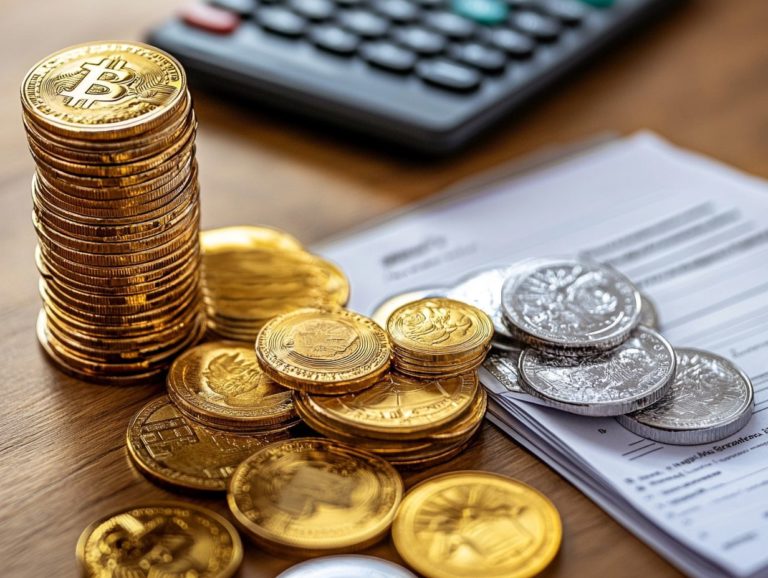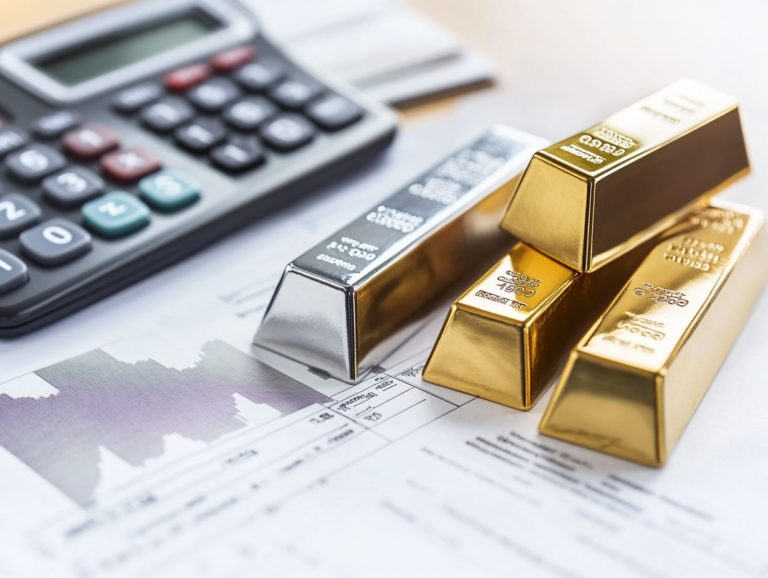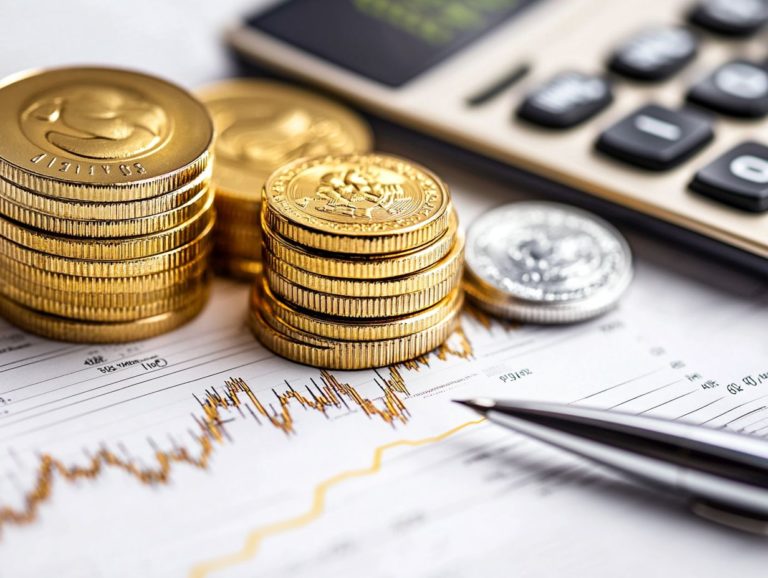Tax Benefits of Precious Metals in Your Portfolio
Investing in precious metals can be a savvy choice for diversifying your portfolio and protecting your wealth.
Beyond their intrinsic value, these assets offer notable tax benefits that can significantly enhance your overall financial strategy. This article delves into various tax-advantaged accounts specifically tailored for precious metal investments, along with capital gains tax exemptions that can work in your favor.
You ll also find a discussion on the key factors to consider when incorporating these commodities into your portfolio, an overview of different types of precious metals, and practical options for purchasing and holding them.
Discover how precious metals can elevate your investment journey today!
Contents
- Key Takeaways:
- Tax Benefits of Including Precious Metals in Your Portfolio
- Factors to Consider When Adding Precious Metals to Your Portfolio
- Types of Precious Metals to Consider
- How to Add Precious Metals to Your Portfolio
- Frequently Asked Questions
- What are the tax benefits of including precious metals in my investment portfolio?
- Are there any tax exemptions for capital gains on precious metals?
- Do I have to pay taxes on dividends from precious metal investments?
- Can I deduct losses from my precious metal investments on my taxes?
- Are there tax advantages to investing in physical precious metals versus paper investments?
- Do I have to pay taxes on precious metals held in a retirement account?
Key Takeaways:
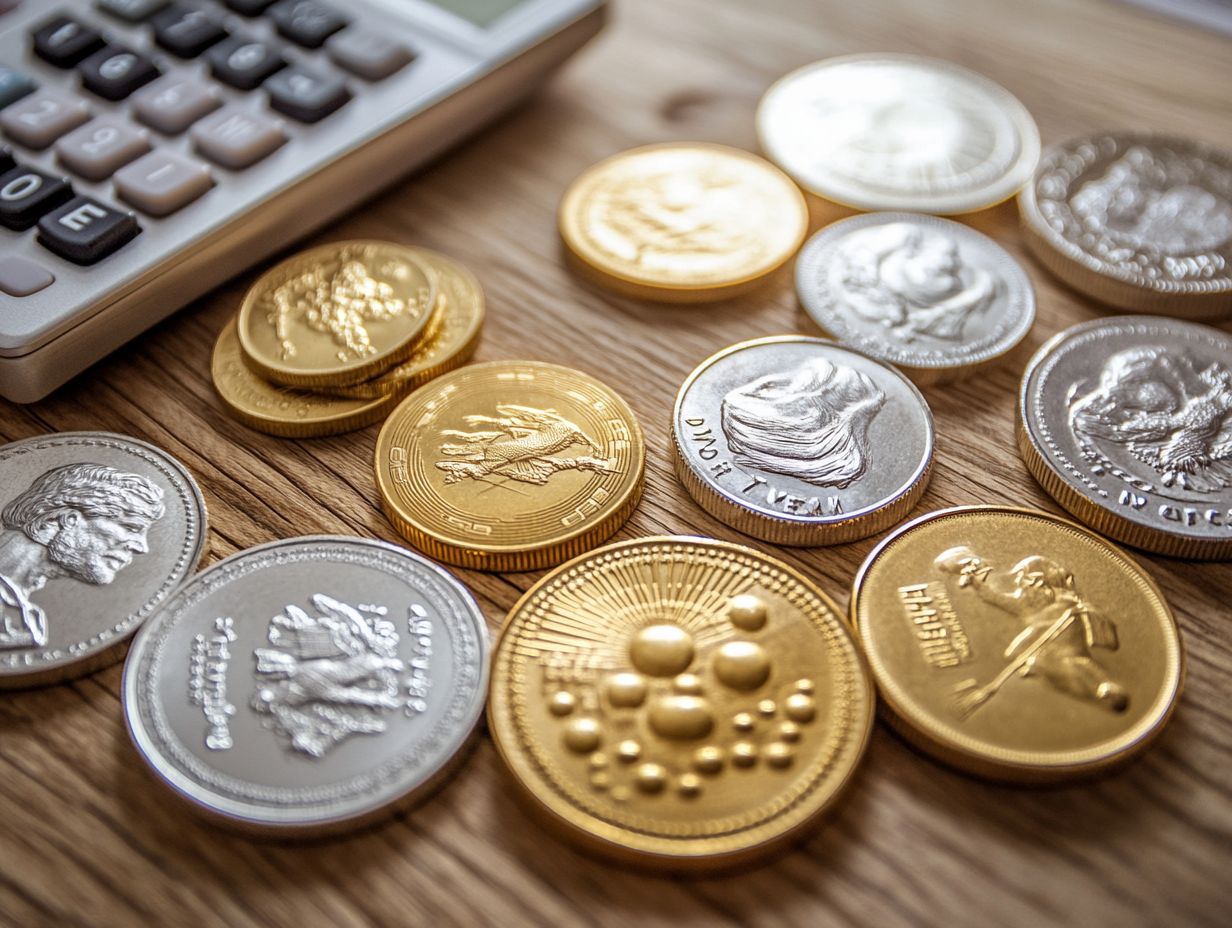
- Diversify your portfolio with precious metals to potentially reduce risk and protect against market volatility.
- Take advantage of tax benefits by holding precious metals in tax-advantaged accounts and potentially avoiding capital gains tax.
- Consider market trends and performance when choosing which types of precious metals to add to your portfolio.
What are Precious Metals?
Precious metals, such as gold, silver, platinum, and palladium, are coveted investment options thanks to their intrinsic value and a long-standing reputation as safe havens amidst economic uncertainty. These tangible assets not only act as a protection from inflation but also present excellent diversification opportunities for those looking to elevate their investment portfolios and secure long-term financial growth.
Their importance goes beyond mere collectibles; they play a pivotal role in various global economic trends. For example, gold often radiates its brilliance during turbulent times, serving as a protective buffer against market downturns. Silver, on the other hand, embraces a dual identity, functioning both as an industrial staple and a monetary asset.
Meanwhile, platinum, celebrated for its rarity, captivates investors with interests in luxury markets and cutting-edge technologies.
Each of these metals can be strategically employed whether through ETFs, direct purchases, or futures contracts giving you the power to customize your investment strategy according to market conditions and your individual risk profile.
Tax Benefits of Including Precious Metals in Your Portfolio
Investing in precious metals offers you unique tax benefits that can significantly enhance your overall portfolio performance, because of current IRS rules surrounding capital gains.
Embracing strategic investment approaches that focus on physical assets like gold and silver allows you to effectively navigate the intricate tax landscape. Additionally, understanding tax deductions for precious metals investors enables you to optimize your financial choices while ensuring compliance with stringent reporting rules.
Tax-Advantaged Accounts
Tax-advantaged accounts like IRAs and Roth IRAs provide you with remarkable benefits if you’re considering adding precious metals to your investment portfolio. These accounts let your investments grow without taxes and may allow tax-free withdrawals, making them an appealing option.
By investing in a precious metals IRA, you can securely hold tangible assets like gold and silver while reaping the tax strategies for precious metals in emerging markets that these accounts offer.
These specially designed accounts enable you to diversify your holdings not only with gold and silver but also with platinum and palladium options that traditional investment vehicles may not provide. The key attractions here are the potential tax savings and the protection against market volatility that precious metals can offer, making it crucial to understand the importance of tax withholding for precious metals.
It s crucial for you to stay informed about IRS regulations surrounding these accounts. There are strict guidelines regarding which types of metals qualify and how they should be stored. By understanding the possible limitations, such as contribution caps and fees, you can effectively strategize for long-term growth and maximize your investment potential.
Capital Gains Tax Exemptions
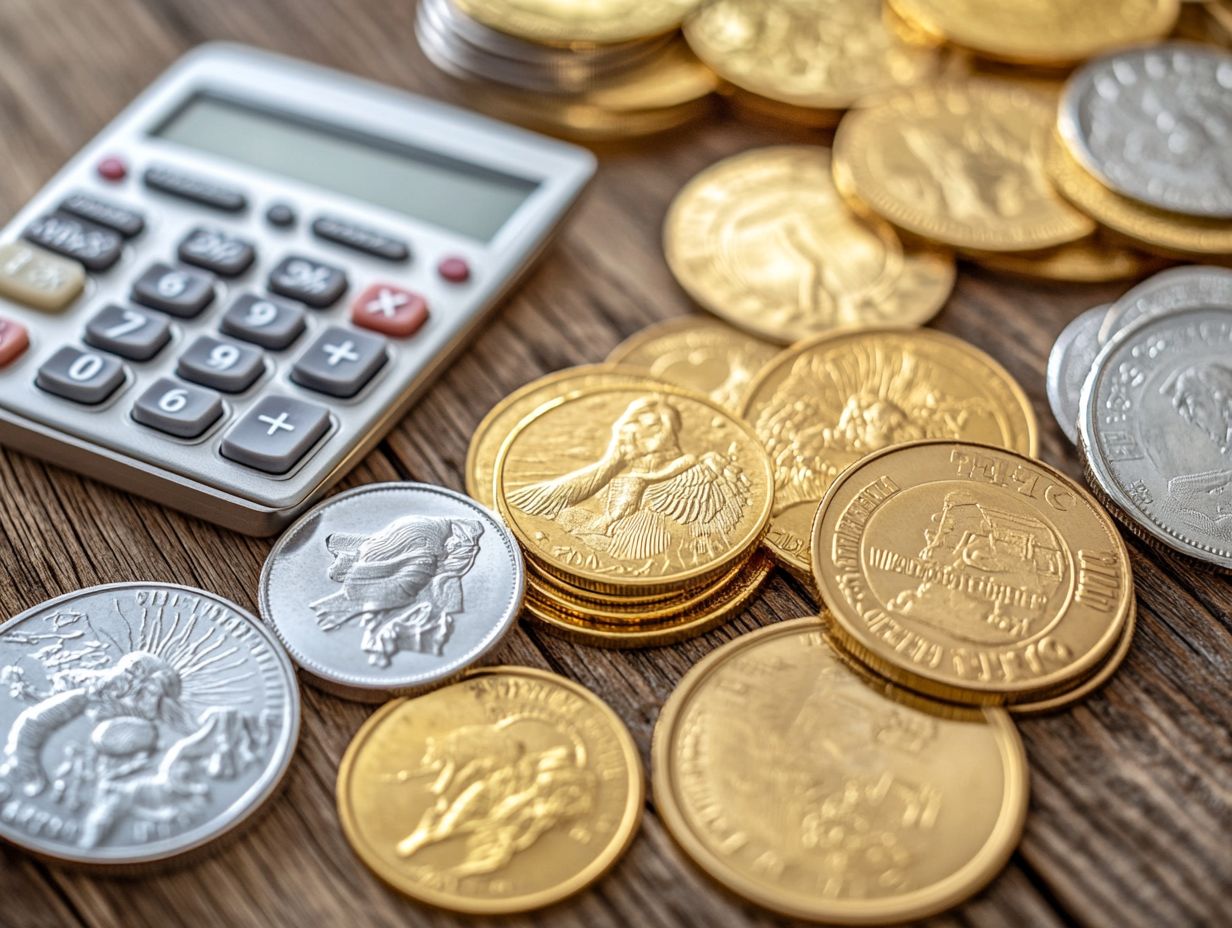
Capital gains tax exemptions are vital for you to consider when investing in precious metals. These exemptions can substantially reduce your tax liabilities when selling your investments. It’s essential to understand the difference between short-term and long-term gains and the implications of collectibles tax. This knowledge will help you make effective investment decisions.
Short-term gains apply to assets held for one year or less. They are taxed at ordinary income rates, which are often significantly higher than favorable long-term capital gains rates. When you hold metals for a longer duration, understanding the tax considerations for precious metals in your portfolio becomes essential, as the benefits typically include a more attractive tax rate.
Report your sales accurately. It s not just the law; it can help you save on taxes. Understanding the tax landscape empowers you to make informed decisions that optimize your portfolio.
Factors to Consider When Adding Precious Metals to Your Portfolio
Thinking about incorporating precious metals into your portfolio? Several crucial factors demand your attention:
- Diversification
- Risk management
- Alignment with your overall investment strategies
Given the frequently turbulent nature of markets and economic uncertainties, understanding how these metals can bolster your financial security is essential for making well-informed investment choices.
Diversification and Risk Management
Diversification is an essential investment strategy for you. It serves as a powerful tool to mitigate risks. By incorporating precious metals into your portfolio, you can significantly enhance your financial outlook.
Allocating a portion of your assets to physical metals like gold and silver can lead to better financial growth and stability, especially during times of economic uncertainty.
Historically, precious metals consistently prove their resilience against volatile market conditions, solidifying their status as a safe haven for investors like you. For example, during the 2008 financial crisis, while traditional equities plummeted, gold surged by approximately 25%. This remarkable performance underscores precious metals’ protective nature during downturns.
They also correlate with inflation. As the dollar weakens, gold often appreciates, acting as a hedge against devaluation. A well-balanced portfolio that includes around 10-15% in precious metals can enhance your risk-adjusted returns. Numerous case studies have shown that diversified portfolios with precious metals consistently outperform those without. However, it’s important to consider the pros and cons of taxing precious metals, paving the way for financial stability even amidst economic turbulence.
Market Trends and Performance
Understanding market trends and performance is essential for you as an investor looking to capitalize on precious metals like gold and silver, which have long been recognized as safe-haven assets. By tracking economic indicators and market volatility, you can make informed decisions about when and how much to invest in these valuable commodities.
In recent years, fluctuations in inflation rates, interest rates, and geopolitical tensions have significantly shaped the prices of these metals. For instance, during economic downturns, heightened consumer uncertainty often drives up demand for gold as a protective measure.
Keep a close watch on central bank policies and currency strength! They can significantly affect metal valuations. Historical data shows that periods of high inflation generally lead to increased gold prices. This underscores the importance of staying well-informed about upcoming economic reports and global events that could impact market sentiment.
Are you ready to boost your financial security with precious metals? Start exploring precious metals today, and consider the impact of tax changes on silver investments to secure your financial future!
Types of Precious Metals to Consider
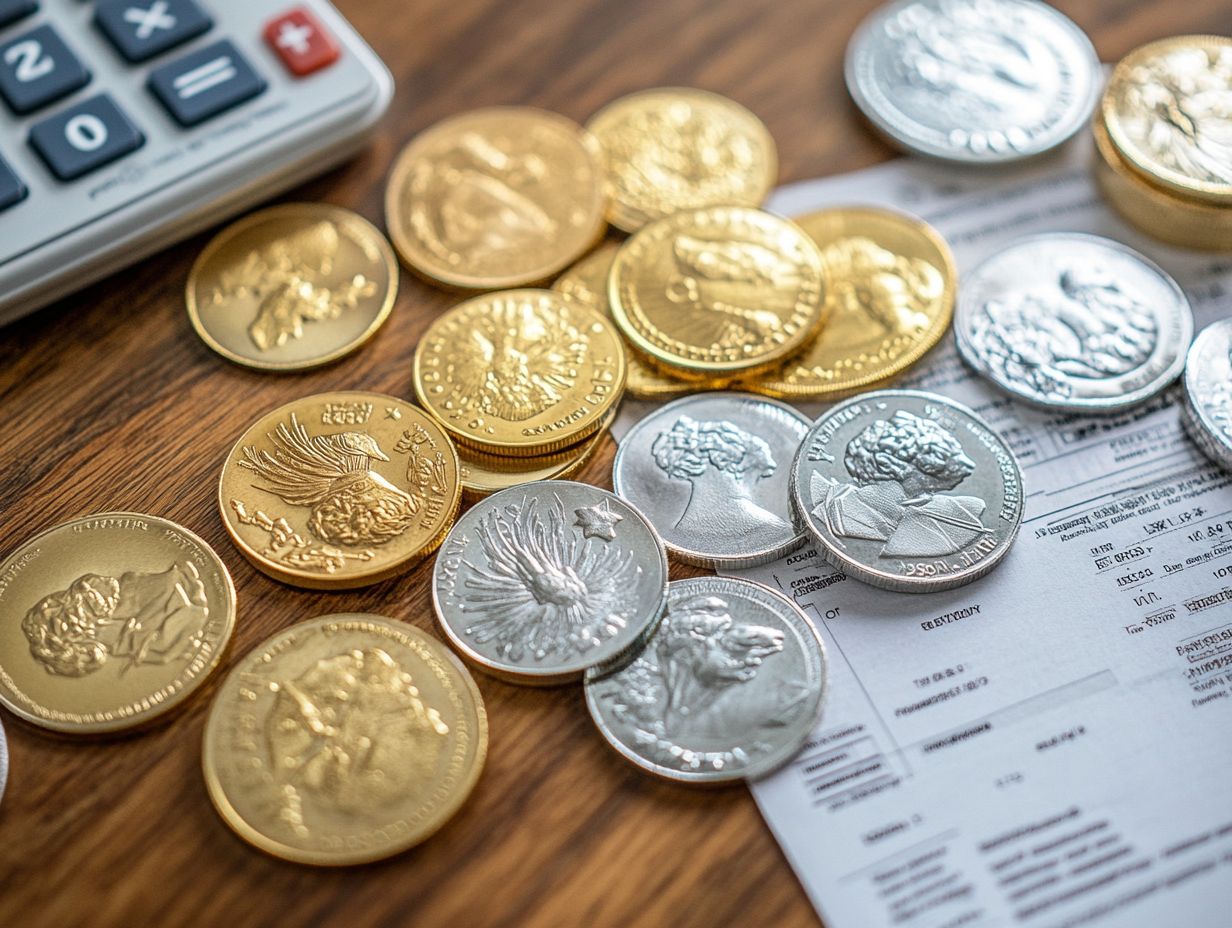
The realm of precious metals offers a diverse array of options, with gold, silver, platinum, and palladium standing out as the most sought-after choices for discerning investors.
Each metal possesses distinct characteristics that influence its market value and appeal as an investment opportunity. It s crucial for you to grasp these differences to make informed decisions in your investment journey.
Gold, Silver, Platinum, and Palladium
Gold, silver, platinum, and palladium are not just valuable commodities; they are essential financial instruments that can elevate your investment portfolio and drive long-term financial growth.
Each metal possesses its own market dynamics, serving distinct purposes within a diversified investment strategy.
Historically, gold has been your safe haven during economic uncertainty. Silver plays a dual role, widely utilized in various industrial applications.
Platinum, prized for its rarity and crucial role in parts that reduce harmful emissions from vehicles, can offer insights into shifts in automotive market trends.
Meanwhile, palladium’s soaring demand, driven by its significance in environmentally friendly technology, has captured the attention of savvy investors like yourself.
As industrial demand evolves and sophisticated investment instruments like ETFs and futures contracts come into play, grasping the unique characteristics of these metals becomes essential. This knowledge gives you the power to make informed decisions, enhancing your portfolio and positioning you to capitalize on market fluctuations.
How to Add Precious Metals to Your Portfolio
Incorporating precious metals into your portfolio requires a nuanced understanding of the diverse options available for purchasing and holding these tangible assets.
Make sure your investment choices match your financial goals.
With a range of avenues at your disposal spanning from bullion bars to coins you must navigate these choices thoughtfully to optimize your investments and enhance your financial strategy.
Options for Purchasing and Holding
Choosing a purchase method is just the start. Regarding purchasing and holding precious metals, you have a variety of options, including buying from dealers, participating in auctions, or acquiring through retirement accounts.
Each choice comes with its unique advantages and potential costs, such as dealer premiums and storage fees.
It s essential to weigh the pros and cons of each option. For instance, while buying from accredited dealers might provide you with the assurance of quality, be mindful that premiums can vary significantly.
On the flip side, auctions may offer lower prices but could introduce risks regarding authenticity.
If you re considering retirement accounts, take the time to evaluate management fees and tax implications, as these can impact your long-term gains.
Ultimately, you should conduct thorough research, keep an eye on market trends, and consider consulting with financial advisors to ensure that the precious metals you select align with your overall investment strategy and risk tolerance.
Frequently Asked Questions
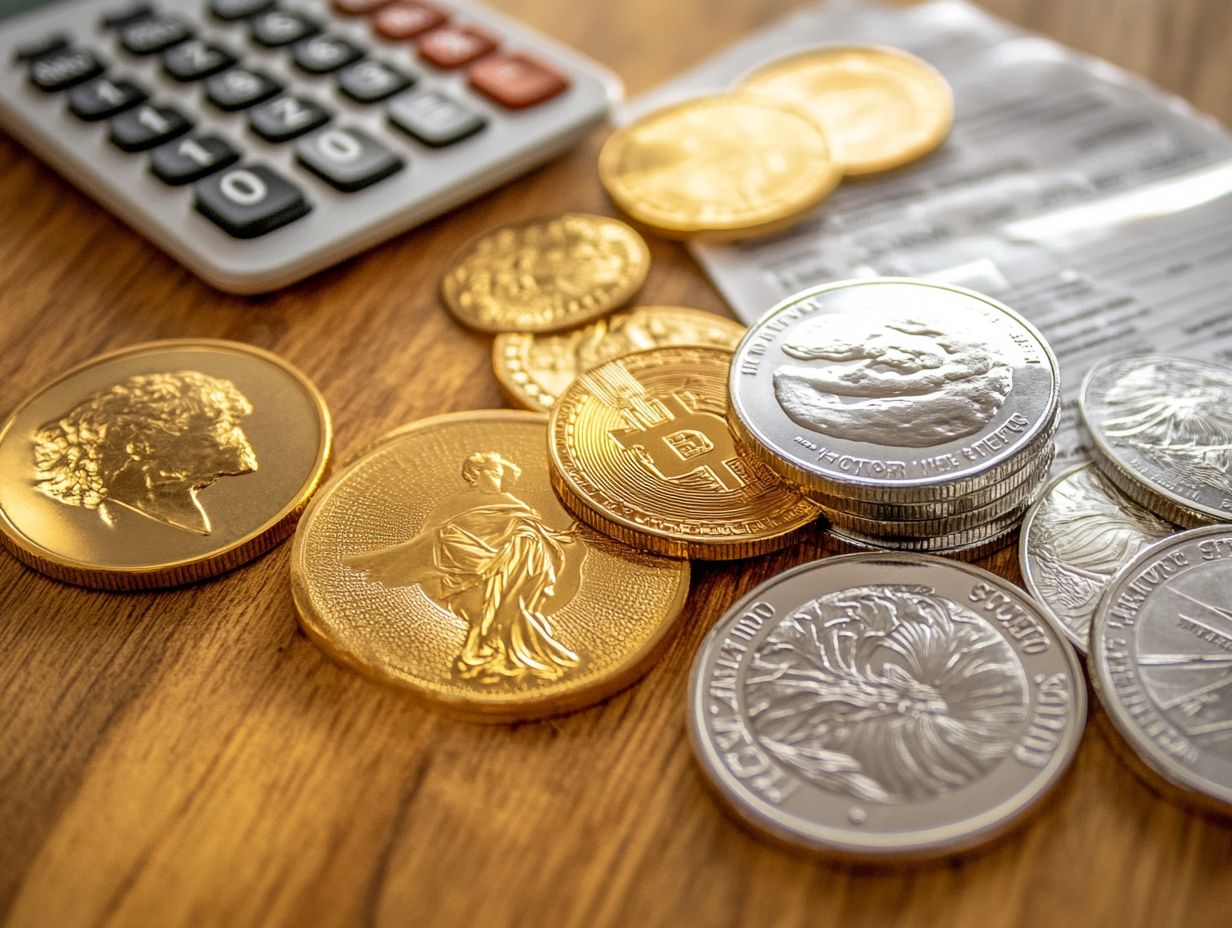
What are the tax benefits of including precious metals in my investment portfolio?
Investing in precious metals can provide tax benefits such as capital gains tax exemptions and potential deductions for certain types of investments.
Precious metals are not subject to the same tax rules as stocks and bonds, making them a potentially valuable asset for tax planning purposes.
Are there any tax exemptions for capital gains on precious metals?
Yes, there are certain exemptions for capital gains taxes on precious metals. For example, if you sell gold or silver bullion that has been held for at least one year, you may be able to exclude up to $250,000 of capital gains from your taxable income.
This amount is doubled for married couples filing jointly.
Do I have to pay taxes on dividends from precious metal investments?
Dividends from precious metal investments are taxed as ordinary income. Gold and silver coins may receive special tax treatment.
Can I deduct losses from my precious metal investments on my taxes?
Yes, you can deduct losses from your precious metal investments. If you sell at a loss, use this to offset gains from other investments.
Are there tax advantages to investing in physical precious metals versus paper investments?
Yes, investing in physical metals can have tax benefits. Physical gold and silver bullion may be taxed at a lower rate than stocks or ETFs.
Do I have to pay taxes on precious metals held in a retirement account?
The taxes on precious metals in retirement accounts depend on the account type. Traditional accounts defer taxes until withdrawal, while Roth accounts are tax-free.










